LaMotte 1200 User Manual
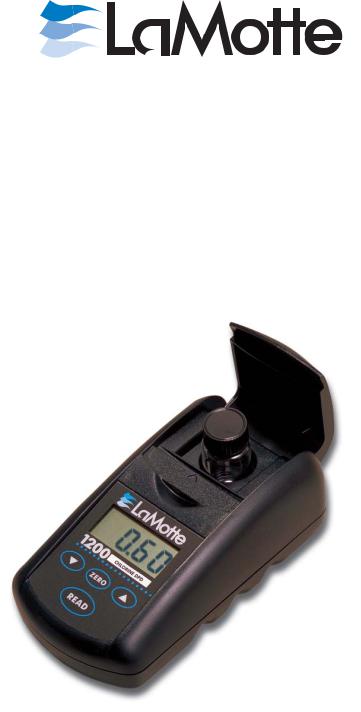
1200
COLORIMETER
.................
Instruction
MANUAL

TABLE OF CONTENTS
GENERAL INFORMATION
Packaging and Delivery. . . . . . . . . . . . . . . . . . . . . . . . . . . . . . . 4
General Precautions |
. . . . . . . . . . . . . . . . . . . . . . . . . . . . . . . . 4 |
|
Safety Precautions . |
. . . . . . . . . . . . . . . . . . . . . . . . . . . . . . . . 4 |
|
Limits of Liability . |
. |
. . . . . . . . . . . . . . . . . . . . . . . . . . . . . . . . 4 |
Specifications . . . |
. |
. . . . . . . . . . . . . . . . . . . . . . . . . . . . . . . . 5 |
Parts & Accessories |
. |
. . . . . . . . . . . . . . . . . . . . . . . . . . . . . . . . 6 |
EPA Compliance . . |
|
. . . . . . . . . . . . . . . . . . . . . . . . . . . . . . . . 7 |
CE Statement . . . |
. |
. . . . . . . . . . . . . . . . . . . . . . . . . . . . . . . . 7 |
CHEMICAL TESTING . . . . . . . . . . . . . . . . . . . . . . . . 8
Water Sampling for Chemical Analysis . . . . . . . . . . . . . . . . . . . . . 8-9 Filtration . . . . . . . . . . . . . . . . . . . . . . . . . . . . . . . . . . . . . . 9 An Introduction To Colorimetric Analysis. . . . . . . . . . . . . . . . . . 10-11 Reagent Blank . . . . . . . . . . . . . . . . . . . . . . . . . . . . . . . . . . . 11 Colorimeter Tubes. . . . . . . . . . . . . . . . . . . . . . . . . . . . . . . . . 11 Sample Dilution Techniques & Volumetric Measurement . . . . . . . . . . . 12 Interferences . . . . . . . . . . . . . . . . . . . . . . . . . . . . . . . . . . . . 13 Stray Light Interference . . . . . . . . . . . . . . . . . . . . . . . . . . . . . . 13
GENERAL OPERATING INFORMATION . . . . . . . . . . . . . 14
Overview. . . . |
. . . . . . . . . . . . . . . . . . . . . . . . . . . . . . . . 14-15 |
|
The Keypad and Display . . . . . . . . . . . . . . . . . . . . . . . . . . . . . |
16 |
|
Testing Tips . . . . . . . . . . . . . . . . . . . . . . . . . . . . . . . . . . . . |
17 |
|
CALIBRATION PROCEDURE. . . . . . . . . . . . . . . . . . 18-19 |
||
ANALYSIS PROCEDURE . . . . . . . . . . . . . . . . . . . . 20-21 |
||
AVAILABLE TEST KITS . . . . . . . . . . . . . . . . . . . . . . |
22 |
|
TROUBLESHOOTING GUIDE . . . . . . . . . . . . . . . . . . . 23 |
||
RS232 PORT . . . . . . . . . . . . . . . . . . . . . . . . . . . |
24 |
|
MAINTENANCE OF THE 1200 . . . . . . . . . . . . . . . . . . |
25 |
|
Replacing the Battery . . . . . . . . . . . . . . . . . . . . . . . . . . . . . . . 25 |
||
Repairs . . . . . . . . . . . . . . . . . . . . . . . . . . . . . . . . . . . . . . . 25 |
||
Meter Disposal. . . . . . . . . . . . . . . . . . . . . . . . . . . . . . . . . . . 25 |
||
WARRANTY . . . . . . . . . . . . . . . . . . . . . . . . . . . . 26 |
||
Limitations. . . . . . . . . . . . . . . . . . . . . . . . . . . . . . . . . . . . . 26 |
||
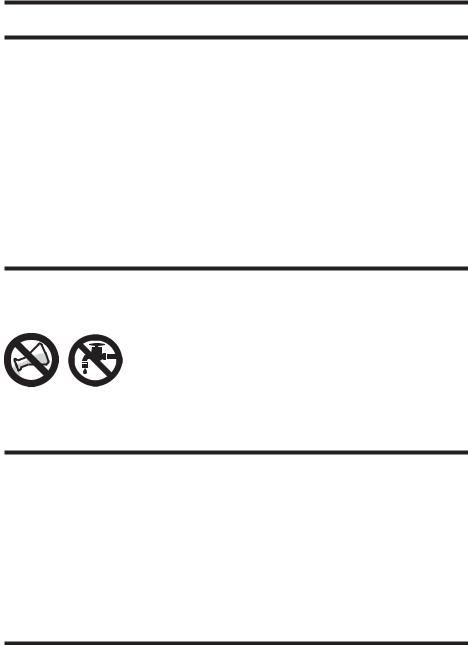
GENERAL INFORMATION
PACKAGING & DELIVERY
Experienced packaging personnel at LaMotte Company assure adequate protection against normal hazards encountered in transportation of shipments. After the product leaves the manufacturer, all responsibility for safe delivery is assured by the transportation company. Damage claims must be filed immediately with the transportation company to receive compensation for damaged goods.
Should it be necessary to return the instrument for repair or servicing, pack the instrument carefully in a suitable container with adequate packing material. A return authorization number must be obtained from LaMotte Company by calling 1-800-344-3100 or faxing 1-410-778-6394. Attach a letter with the authorization number to the shipping carton which describes the reason for the return. This information will enable the service department to make the required repairs more efficiently.
GENERAL PRECAUTIONS
Read the instruction manual before attempting to set up or operate this instrument. Failure to do so could result in personal injury or damage to the instrument.
The 1200 Colorimeter should not be stored or used in a wet or corrosive environment. Care should be taken to prevent water from wet colorimeter tubes from entering the colorimeter light chamber.
NEVER PUT WET TUBES IN THE COLORIMETER.
SAFETY PRECAUTIONS
Read labels on all reagent containers. Some labels include precautionary notices and first aid information. Certain reagents are considered hazardous and are designated with a * in the instruction manual. To view or print a Material Safety Data Sheet (MSDS) for these reagents see MSDS CD or our web site. To obtain a printed copy, contact us by e-mail, phone or FAX. Additional information for all LaMotte reagents is available in the United States, Canada, Puerto Rico, and the US Virgin Islands from Chem-Tel by calling 1-800-255-3924. For other areas, call 813-248-0585 collect to contact Chem-Tel’s International access number. Each reagent can be identified by the four digit number listed on the upper left corner of thereagent label, in the contents list and in the test procedures.
LIMITS OF LIABILITY
Under no circumstances shall LaMotte Company be liable for loss of life, property, profits, or other damages incurred through the use or misuse of their products.
4

SPECIFICATIONS
Instrument Type Single wavelength, direct reading colorimeter
Measurement Wavelengths: 420 nm, 460 nm, 510 nm, 530 nm, 570 nm or
|
605 nm |
Readable Resolution: |
Determined by test factor |
|
|
Photometric Precision: |
±0.001 Absorbance Unit |
|
|
Range: |
0 - 2.00 absorbance units |
|
|
Display: |
3 ½ digits |
|
|
Response Time: |
2 seconds |
|
|
Warm-up Time: |
Not required |
|
|
Lamp: |
LED |
|
|
Detector: |
Silicon Photodiode |
|
|
Sample: |
10 mL in capped tube |
|
|
Sample Chamber: |
Accepts 25mm diameter flat-bottomed tubes |
|
(capped) |
|
|
Power Source: |
Battery Operation: 9 Volt Alkaline |
|
|
Line Operation: |
110V/60Hz, 220V/50Hz, with available adapter |
|
|
Size (L X W X H): |
8.5 x 16.2 x 6.7 cm, 3.4 X 6.4 X 2.6 inches |
|
|
Shipping Weight: |
11 oz (312 g) meter only |
|
|
Serial Interface: |
RS232, 8 pin mDIN, 9600b, 8, 1, n |
|
|
5
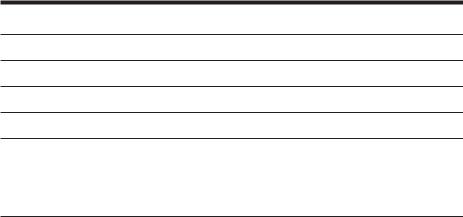
PARTS & ACCESSORIES
Included in the Model 1200 Colorimeter Kit :
1200 Colorimeter
Colorimeter tubes, set of 6
Water Sample Collecting Bottle
Reagent System
Optional Accessories
AC Adapter, 110V/60Hz |
Code 1726-110 |
AC Adapter, Universal |
Code 1754 |
|
|
Colorimeter Tubes, set of 6 |
Code 0290-6 |
|
|
6

EPA COMPLIANCE
The 1200 Chlorine Colorimeter is an EPA Accepted instrument. EPA Accepted means that the instrument meets
requirements for colorimeters as found in test procedures that are approved for the National Primary Drinking Water Regulations (NPDWR) or National Pollutant  Discharge Elimination Systems (NPDES) compliance monitoring programs. EPA Accepted instruments may be used with approved test procedures without additional approval.
Discharge Elimination Systems (NPDES) compliance monitoring programs. EPA Accepted instruments may be used with approved test procedures without additional approval.
CE COMPLIANCE
The 1200 Colorimeter has been independently tested and has earned the European CE Mark of Compliance for electromagnetic compatibility and safety.
EUROPEANCE
MARK
DECLARATION OF CONFORMITY
Application of Council Directives: 89/336/EEC
Standards to which Conformity Declared: EN55022, EN50082-1, En600950
Manufacturer's Name:
Manufacturer's Address:
Importer's Name:
Importer's Address:
Type of Equipment:
Model Number:
Year of Manufacture:
I, the undersigned, hereby declare that the equipment specified above conforms to the above Directive and Standards.
|
Chestertown, Maryland |
|
|
|
Place |
Signature |
|||
|
3-19-97 |
|
James K. Trumbauer |
|
|
Date |
Name |
||
|
|
V.P., Director of Research & Development |
||
|
|
|
|
|
|
|
Position |
||
NOTE: The device complies to the product specifications for the
Low Voltage Directive when furnished with the 220V AC Adapter (Code 1774).
7

CHEMICAL TESTING
WATER SAMPLING FOR CHEMICAL ANALYSIS
Taking Representative Samples
The underlying factor to be considered for any type of water sampling is whether or not the sample is truly representative of the source. To properly collect a representative sample:
•Sample as frequently as possible.
•Collect a large sample or at least enough to conduct whatever tests are necessary.
•Make a composite sample for the same sampling area.
•Handle the sample in such a way as to prevent deterioration or contamination before the analysis is performed.
•Perform analysis for dissolved gases such as dissolved oxygen, carbon dioxide, and hydrogen sulfide immediately at the site of sampling. These factors, as well as samples for pH, cannot be stored for later examination.
•Make a list of conditions or observations which may affect the sample. Other considerations for taking representative samples are dependent upon the source of the sample. Taking samples from surface waters involves different considerations than taking samples from impounded and sub-surface waters.
Sampling of Open Water Systems
Surface waters, such as those found in streams and rivers, are usually well mixed. The sample should be taken downstream from any tributary, industrial or sewage pollution source. For comparison purposes samples may be taken upstream and at the source of the pollution before mixing.
In ponds, lakes, and reservoirs with restricted flow, it is necessary to collect a number of samples in a cross section of the body of water, and where possible composite samples should be made to ensure representative samples.
To collect samples from surface waters, select a suitable plastic container with a tight fitting screw cap. Rinse the container several times with the sample to be tested, then immerse the container below the surface until it is filled to overflowing and replace the cap. If the sample is not to be tested immediately, pour a small part of the sample out and reseal. This will allow for any expansion. Any condition which might affect the sample should be listed.
Sub-surface sampling is required to obtain a vertical profile of streams, lakes, ponds, and reservoirs at specific depths. This type of sampling requires more sophisticated sampling equipment.
8

For dissolved oxygen studies, or for tests requiring small sample sizes, a Water Sample Bottle (LaMotte Code 1060) will serve as a subsurface or in-depth sampler. This weighted device is lowered to the sampling depth and allowed to rest at this depth for a few minutes. The water percolates into the sample chamber displacing the air which bubbles to the surface. When the bubbles cease to rise, the device has flushed itself approximately five times and it may be raised to the surface for examination. The inner chamber of the sampling device is lifted out and portions of the water sample are carefully dispensed for subsequent chemical analysis.
A Snap-Plunger Water Sampler (LaMotte Code 1077) is another “in-depth” sampling device which is designed to collect large samples which can be used for a multitude of tests. Basically, this collection apparatus is a hollow cylinder with a spring loaded plunger attached to each end. The device is cocked above the surface of the water and lowered to the desired depth. A weighted messenger is sent down the calibrated line to trip the closing mechanism and the plungers seal the sample from mixing with intermediate layers as it is brought to the surface. A special drain outlet is provided to draw off samples for chemical analysis.
Sampling of Closed System
To obtain representative samples from confined water systems, such as pipe lines, tanks, vats, filters, water softeners, evaporators and condensers, different considerations are required because of chemical changes which occur between the inlet and outlet water. One must have a basic understanding of the type of chemical changes which occur for the type of equipment used. Also, consideration should be given to the rate of passage and retaining time for the process water.
Temperature changes play an important part in deciding exactly what test should be performed. Process water should be allowed to come to room temperature, 20–25°C, before conducting any tests.
When drawing off samples from an outlet pipe such as a tap, allow sample to run for several minutes, rinsing the container several times before taking the final sample. Avoid splashing and introduction of any contaminating material.
FILTRATION
When testing natural waters that contain significant turbidity due to suspended solids and algae, filtration is an option. Reagent systems, whether EPA, Standard Methods, LaMotte or any others, will generally only determine dissolved constituents. Both EPA and Standard Methods suggest filtration through a 0.45 micron filter membrane, to remove turbidity, for the determination of dissolved constituents.** To test for total constituents, organically bound and suspended or colloidal materials, a rigorous high temperature acid digestion is necessary.
**LaMotte offers a filtering apparatus: Syringe Assembly (Code 1050) and Membrane Filters, 0.45 micron (Code 1103).
9

AN INTRODUCTION TO
COLORIMETRIC ANALYSIS
Most test substances in water are colorless and undetectable to the human eye. To test for their presence we must find a way to “see” them. The LaMotte colorimeter can be used to measure any test substance that is itself colored or can be reacted to produce a color. In fact a simple definition of colorimetry is “the measurement of color” and a colorimetric method is “any technique used to evaluate an unknown color in reference to known colors”. In a colorimetric chemical test, the intensity of the color from the reaction must be proportional to the concentration of the substance being tested. Some reactions have limitations or variances inherent to them that may give misleading results. Many such interferences are discussed with each particular test instruction. In the most basic colorimetric method the reacted test sample is visually compared to a known color standard. However, accurate and reproducible results are limited by the eyesight of the analyst, inconsistencies in the light sources, and the fading of color standards.
To avoid these sources of error, a colorimeter can be used to photoelectrically measure the amount of colored light absorbed by a colored sample in reference to a colorless sample (blank).
White light is made up of many different colors or wavelengths of light. A colored sample typically absorbs only one color or one band of wavelengths from the white light. Only a small difference would be measured between white light before it passes through a colored sample versus after it passes through a colored sample. The reason for this is that the one color absorbed by the sample is only a small portion of the total amount of light passing through the sample. However, if we could select only that one color or band of wavelengths of light to which the test sample is most sensitive, we would see a large difference between the light before it passes through the sample and after it passes through the sample.
A colorimeter passes a white light beam through an optical filter which transmits only one particular color or band of wavelengths of light to the photodetector where it is measured. The difference in the amount of colored light transmitted by a colorless sample (blank) and the amount of colored light transmitted by a colored sample is a measurement of the amount of colored light absorbed by the sample. In most colorimetric tests the amount of colored light absorbed is directly proportional to the concentration of the test factor producing the color and the path length through the sample. However, for some tests the amount of colored light absorbed is inversely proportional to the concentration.
The choice of the correct optical filter and therefore the correct color or wavelength of light is important. It is interesting to note that the filter that gives the most sensitive calibration for a test factor is the complementary color of the test sample. For example, the Nitrate-Nitrogen test produces a pink color proportional to the nitrate concentration in the sample (the greater the nitrate concentration, the darker the pink color). A green filter is used since a pinkish-red solution absorbs mostly green light.
10
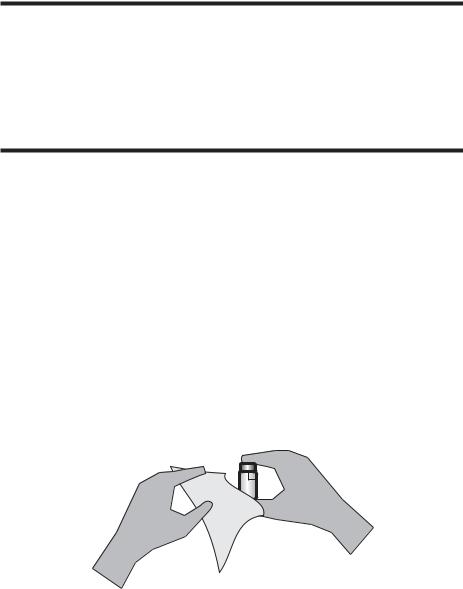
The 1200 Colorimeter has been specially calibrated to read test results directly in parts per million (ppm) of the test factor. The sensitivity of the response has been maximized by using a specific, complementary light source for each test.
REAGENT BLANK
Some tests will provide greater accuracy if a reagent blank is determined, to compensate for any color or turbidity resulting from the reagents themselves. A reagent blank is performed by running the test procedure on 10 mL of demineralized water. Use sample water to zero the meter. Insert the reagent blank in the colorimeter chamber and select READ. Note result of reagent blank. Perform the tests on the unknown as described. Subtract results of reagent blank from all subsequent test results.
COLORIMETER TUBES
The handling of the colorimeter tubes is of utmost importance. Scratches, fingerprints and water droplets on the tube or inside the light chamber can cause stray light interference leading to inaccurate results. It is imperative that the tubes and light chamber be clean and dry. The glassware must be clean and defect-free. Scratches and abrasions will permanently affect the accuracy of the readings. Tubes can be acid washed periodically. After a tube has been filled and capped, it should be held by the cap and the outside surface should be wiped with a clean, lint-free absorbent cloth until it is dry and smudge-free. Handling the tube only by the cap will avoid problems from fingerprints. Always set the clean tube aside on a clean surface that will not contaminate the tube.
Variability in the geometry and quality of the glassware is the predominate cause of variability in results. Orientation of the tube in the chamber will greatly affect the test results. To obtain the most accurate results, the tubes must be positioned so that the index line on the tube is aligned with the arrow-shaped index mark t molded into the housing in front of the light chamber. This will ensure that the most accurate results are obtained.
11
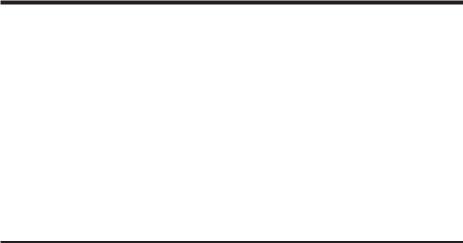
SAMPLE DILUTION TECHNIQUES & VOLUMETRIC MEASUREMENTS
If a test result using the 1200 Colorimeter gives an ER2 (over range) message, the sample must be diluted. Then the test should be repeated to obtain a reading which is in the concentration range for the test. (Note: This is not true for colorimetric determination of pH.)
Example:
Measure 5 mL of the water sample into a graduated cylinder. Add demineralized water until the cylinder is filled to the 10 mL line. The sample has been diluted by one-half, and the dilution factor is therefore 2. Perform the test procedure, then multiply the resulting concentration by 2 to obtain the test result.
The following table gives quick reference guidelines on dilutions of various proportions. All dilutions are based on a 10 mL volume, so several dilutions will require small volumes of the water sample. Graduated pipets should be used for all dilutions.
|
Deionized Water to |
|
|
Bring Volume to 10 |
Multiplication |
Size of Sample |
mL |
Factor |
|
|
|
10 mL |
0 mL |
1 |
|
|
|
5 mL |
5 mL |
2 |
|
|
|
2.5 mL |
7.5 mL |
4 |
|
|
|
1 mL |
9 mL |
10 |
|
|
|
0.5 mL |
9.5 mL |
20 |
|
|
|
If the above glassware is not available, dilutions can be made with the colorimeter tube. Fill the colorimeter tube to the 10 mL line with the sample then transfer it to another container. Add 10 mL volumes of demineralized water to the container and mix. Transfer back 10 mL of the diluted sample to the colorimeter tube and follow the test procedure. Continue diluting and testing until a reading, which is in the concentration range for the test, is obtained. Be sure to multiply the concentration found by the dilution factor (the number of total 10 mL volumes used).
Example:
10 mL of sample is diluted with three 10 mL volumes of demineralized water; the dilution factor is four.
12

INTERFERENCES
LaMotte reagent systems are designed to minimize most common interferences. Each individual test discusses interferences unique to that test. Be aware of possible interferences in the water being tested.
The reagent systems also contain buffers to adjust the water sample to the ideal pH for the reaction. It is possible that the buffer capacity of the water sample may exceed the buffer capacity of the reagent system and the ideal pH will not be obtained. If this is suspected, measure the pH of a reacted distilled water reagent blank using a pH meter. This is the ideal pH for the test. Measure the pH of a reacted water sample using the pH meter. If the pH is significantly different from the ideal value, the pH of the sample should be adjusted before testing.
Interferences due to high concentration of the substance being tested, can be overcome by sample dilution (see page 12).
STRAY LIGHT INTERFERENCE
Stray light interference can be minimized by always zeroing the meter and reading a sample with the lid closed. Turbidimetric determinations (i.e. sulfate) are most likely to exhibit a stray light interference. Colorimetric tests are less likely to have this problem unless the samples are turbid. If sample turbidity is causing a stray light interference, filtration may be needed.
13

GENERAL OPERATING INFORMATION
OVERVIEW
The Model 1200 Colorimeter is a portable, microprocessor-controlled, direct reading colorimeter. The microprocessor enables factory programmed calibrations to optimally match non-linear curves. The auto zero feature eliminates the need to dial in the zero manually. A sealed keypad controls the operation. The large display presents measurements in ppm concentration and indicates low battery warnings. The 1200 will turn off automatically after 5 minutes to prolong battery life. This will not affect the user calibration and the meter will not have to be re-zeroed. The calibration and the last zero reading will be stored in memory.
The 1200 is supplied with a 9 volt alkaline battery. An optional AC power adapter is available.
A RS-232 serial port on the back of the meter allows an interface of the colorimeter with a computer for real time data acquisition and data storage using the PC. This port also allows an interface with a RS-232 serial printer.
14
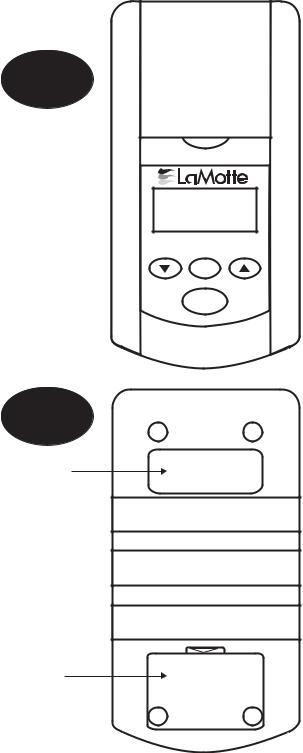
Top
View
2.55
I200 
••••••••••••••••••
ZERO
READ
Bottom
View
Serial
Number
Battery
Compartment
15
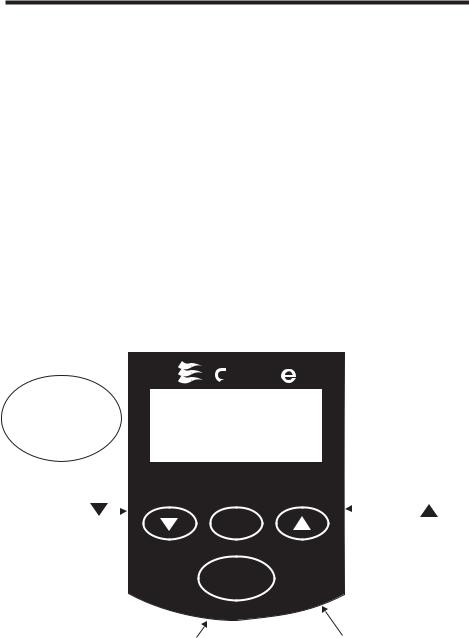
THE KEYPAD and DISPLAY
The DISPLAY:
 When the READ button is first pushed, a number will be briefly displayed that indicates the software version number.
When the READ button is first pushed, a number will be briefly displayed that indicates the software version number.
 A walking dash ( - ) will be displayed when reading is taking place.
A walking dash ( - ) will be displayed when reading is taking place.
 Bla (blank) will be displayed after the ZERO button has been pushed and held for 2 seconds. If the ZERO button is released while BLA is displayed, a zero or blank reading will be taken.
Bla (blank) will be displayed after the ZERO button has been pushed and held for 2 seconds. If the ZERO button is released while BLA is displayed, a zero or blank reading will be taken.
 cal (calibrate) will be displayed after the zero button has been pushed and held for 5 seconds. If the ZERO button is released whileCAL is displayed, the calibration mode will be entered as indicated by a flashing display.
cal (calibrate) will be displayed after the zero button has been pushed and held for 5 seconds. If the ZERO button is released whileCAL is displayed, the calibration mode will be entered as indicated by a flashing display.
 OFF will be displayed after the READ button has been held down for 2 seconds. The meter will turn off when the button is released.
OFF will be displayed after the READ button has been held down for 2 seconds. The meter will turn off when the button is released.
 Er1 will be displayed when the battery voltage is very low.
Er1 will be displayed when the battery voltage is very low.
 Er2 will be displayed when concentration is over range.
Er2 will be displayed when concentration is over range.
 Er3 will be displayed when the bulb has burned out.
Er3 will be displayed when the bulb has burned out.
 BAT will be displayed when the battery voltage is getting low. Readings are reliable. Replace battery as soon as possible.
BAT will be displayed when the battery voltage is getting low. Readings are reliable. Replace battery as soon as possible.
See |
L |
|
Mott |
|
|
|
|
|||
|
|
|
||||||||
|
|
|
|
|||||||
|
|
|
|
|||||||
|
|
|
||||||||
|
|
|
|
|
|
|
|
|
||
TROUBLE |
|
|
|
|
|
|
|
|
|
|
SHOOTING |
|
|
|
|
|
|
|
|
|
|
GUIDE |
|
|
|
|
|
|
|
|
|
|
page 23 |
|
|
|
|
|
|
|
|
|
|
|
|
I200 |
|
|
|
|
|
|
|
|
|
|
|
|
|
|
|
|
|
|
|
|
|
•••••••••••••••••• |
|
|
|
|||||
The DOWN |
|
ZERO |
|
The UP |
||||||
|
||||||||||
|
|
|||||||||
ARROW will |
|
ARROW will |
||||||||
DECREASE the |
|
|
|
|
|
|
|
|
INCREASE |
|
numerical value |
|
|
|
|
|
|
|
|
the numerical |
|
of the display. |
READ |
|
value of the |
|||||||
|
|
|
display. |
|||||||
The READ button is used to turn the meter ON and to take readings. Pressing the button for 2 seconds will cause the meter to display OFF. Releasing the button when OFF is displayed turns the meter OFF.
The ZERO button is used to zero the meter and for calibration procedures.
16

TESTING TIPS
1.
Samples should be collected in a clean glass or polyethylene container.
2.
Samples should be analyzed as soon as possible after collection.
3.
Discard tubes that are badly scratched.
5.
Protect reagents and components from extreme heat and cold.
4.
ONE
SHELFLIFE year
Observe the shelf-life recommendations for reagents.
6. |
Never put |
wet tubes in |
colorimeter.
17
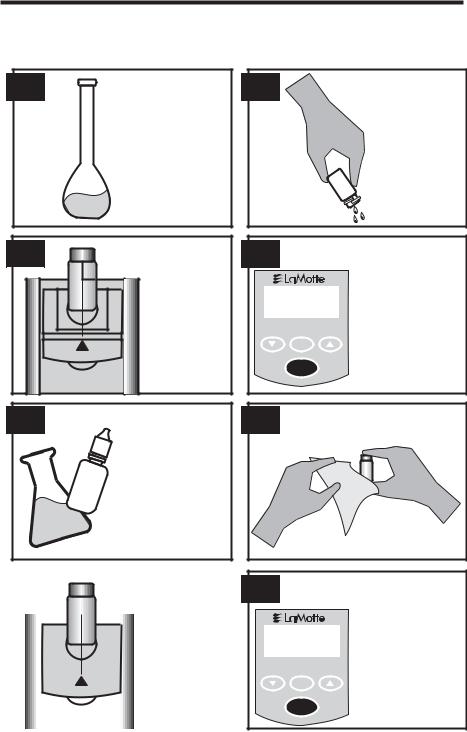
CALIBRATION PROCEDURE
The 1200 has been pre-calibrated. Recalibration of the 1200 by the user is not required. However, a procedure to standardize the calibration (shown below) should be performed to obtain the most accurate readings.
1. |
2. |
Rinse and fill a |
|
Prepare standard |
colorimeter tube |
|
(0290) to the 10 |
|
|
solutions to be |
|
|
mL line with |
|
|
tested. |
|
|
standard |
|
|
|
|
|
|
solution. Cap |
|
|
and wipe dry. |
3. |
Insert the tube |
into the |
|
|
chamber, being |
|
sure to align the |
|
index line with |
|
the arrow on |
|
the meter. |
|
Close the lid. |
|
This tube is the |
|
blank or zero. |
5.
|
ppm |
.50 |
|
2 |
|
React a standard that is in the range of the reagent system, and similar to the expected range of the sample. Follow the individual test procedure.
4.
bla
I200 COLORIMETER
••••••••••••••••••
ZERO
READ
Push the READ button to turn the meter on. Press the ZERO button and hold it for 2 seconds until
is displayed. Release the button to take a zero reading (0 ppm).
6. Wipe the tube clean with a lint-free cloth.
|
|
|
|
|
|
|
|
|
|
|
7. |
|
|
|
|
|
Insert the |
||||
|
|
|
|
|
tube into the |
|||||
|
|
|
|
|
||||||
|
|
|
|
|||||||
|
|
|
|
|
|
|
|
|
chamber, |
|
|
|
|
|
|
|
|
|
|
being sure to |
|
|
|
|
|
|
|
|
|
|
||
|
|
|
|
|
|
|
|
|
align the |
|
|
|
|
|
|
|
|
|
|
index line |
|
|
|
|
|
|
|
|
|
|
with the |
|
|
|
|
|
|
|
|
|
|
arrow on the |
|
|
|
|
|
|
|
|
|
|
||
|
|
|
|
|
|
|
|
|
meter. Close |
|
|
|
|
|
|
|
|
|
|
the lid. |
|
|
|
|
|
|
|
|
|
|
|
|
8. Push the READ button. If the displayed value is not the same as
|
the value of the |
|
2.55 |
reacted standard |
|
(within the |
||
I200 COLORIMETER |
specification |
|
limits), continue |
||
•••••••••••••••••• |
||
ZERO |
with the |
|
|
calibration |
|
READ |
procedure. |
18
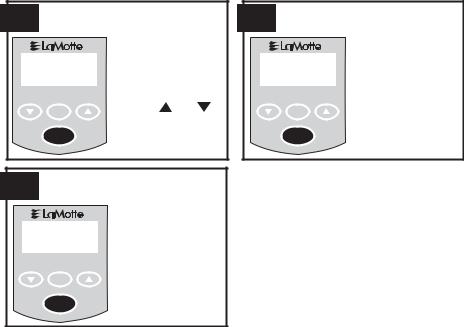
9.
“ |
“ |
|
2.55 |
“ |
|
“ |
|
|
I200 COLORIMETER
••••••••••••••••••
ZERO
READ
Push and hold the ZERO button for 5 seconds until CAL is displayed. Release the button. The display will flash. Adjust the display with the and buttons until the value of the standard is displayed.
11.
I200 COLORIMETER
••••••••••••••••••
ZERO
READ
Turn the unit off by holding the READ button down for at least 2 seconds, or proceed to measure the test samples following the procedure on page 20.
10.

|
Push the ZERO |
2.50 |
button again to |
memorize the |
|
I200 COLORIMETER |
calibration. The |
•••••••••••••••••• 1200 display will |
|
ZERO |
stop flashing. |
|
Calibration is |
READ |
complete. |
The 1200 can be calibrated with two prepared standards. The concentrations of the standards should be chosen from the low and high ends of the range of the meter. The low standard must be less than 5% of over range. To calibrate the meter with two standards, follow steps 1-11 of the calibration procedure for one reacted sample. Repeat steps 1-11 of the calibration procedure with the second reacted standard.
•The calibration procedure should be followed as often as required by regulations and laws for compliance monitoring.
•To reset the calibration to the factory calibration: with the meter off, hold down the tand push READ. The meter will turn on and the calibration will be reset.
19

ANALYSIS PROCEDURE
|
|
|
|
|
|
|
|
|
|
|
|
|
|
|
|
|
1. |
|
|
|
|
|
|
|
|
|
Fill the Water |
|
|
2. |
Rinse and fill a |
|
|
|
|
|
|
|
|
|
|
|
|
|
|
||
|
|
|
|
|
|
|
|
|
|
|
Sample Collecting |
|
|
|
colorimeter tube |
|
|
|
|
|
|
|
|
|
|
|
Bottle (0688) with |
|
|
|
(0290) to the 10 |
|
|
|
|
|
|
|
|
|
|
|
sample water. This |
|
|
|
mL line with |
|
|
|
|
|
|
|
|
|
|
|
will be used to |
|
|
|
sample water. |
|
|
|
|
|
|
|
|
|
|
|
dispense sample |
|
|
|
Cap and wipe |
|
|
|
|
|
|
|
|
|
|
|
water for the tests. |
|
|
|
dry. |
|
|
|
|
|
|
|
|
|
|
|
|
|
|
|
|
3. |
Insert the tube |
into the |
|
|
chamber, being |
|
sure to align the |
|
index line with |
|
the arrow on |
|
the meter. |
|
Close the lid. |
|
This tube is the |
|
blank or zero. |
5. |
|
 React a sample following the individual test procedure.
React a sample following the individual test procedure.
4.
bla
I200 COLORIMETER
••••••••••••••••••
ZERO
READ
Push the READ button to turn the meter on. Press the ZERO button and hold it for 2 seconds until bla is displayed. Release the button to take a zero reading (0 ppm).
6. Wipe the tube clean with a lint-free cloth.
7.
Insert the tube into the chamber, being sure to align the index line with
the arrow on
the meter.
Close the lid.
8.
|
|
Push the READ |
|
2.55 |
button. The |
||
concentration in |
|||
|
|
||
•••••••••••••••••• ppm will be |
|||
I200 |
COLORIMETER |
displayed within |
|
|
|
||
|
ZERO |
2 seconds. |
|
|
|
||
|
READ |
|
|
20

9.
I200 COLORIMETER
••••••••••••••••••
ZERO
READ
The 1200 will turn off automatically 5 minutes after the last button push. To turn the meter off manually, hold the READ button for 2 seconds. Release the button when OFF is displayed.

 Note
Note
If Er2 is displayed, the concentration is over range. The sample must be diluted and re-tested. See page 12.
21

AVAILABLE TEST KITS
TEST |
ORDER |
RANGE |
DETECTION |
TEST METHOD |
FACTOR |
CODE/MODEL (PPM) |
LIMIT |
(# OF REAGENTS) |
|
|
|
|
|
|
Ammonia |
3680-01 |
0-5.00 |
0.05 |
Nessler (2) |
Nitrogen |
DC 1200-NH |
|
|
|
|
|
|
|
|
Bromine |
3672-01 |
0-7.00 |
0.05 |
DPD Tablets (1) |
|
DC 1200-BR |
|
|
|
|
|
|
|
|
Chlorine |
3670-01 |
0-4.00 |
0.05 |
DPD Tablets (2) |
(Free & |
DC1200-CL |
|
|
|
Total) |
|
|
|
|
|
|
|
|
|
Chlorine |
3670-01-LI |
0-4.00 |
0.05 |
DPD Liquid (3) |
(Free & |
DC1200-CL-LI |
|
|
|
Total) |
|
|
|
|
|
|
|
|
|
Chlorine |
3671-01 |
0-7.00 |
0.05 |
DPD with Glycine |
Dioxide |
DC1200-CLO |
|
|
Solution (2) |
|
|
|
|
|
Copper |
3673-01 |
0-8.00 |
0.03 |
Diethyldithio- |
|
DC1200-CO |
|
|
carbamate (1) |
|
|
|
|
|
Fluoride |
3674-01 |
0-2.00 |
0.03 |
Aliizarin-Zirconyl |
|
DC1200-FL |
|
|
(2) |
|
|
|
|
|
Iron |
3681-01 |
0-4.00 |
0.25 |
1-10 |
|
DC1200-FE |
|
|
Phenanthroline (2) |
|
|
|
|
|
Manganese |
3682-01 |
0-0.90 |
0.01 |
PAN (3) |
|
DC1200-MN |
|
|
|
|
|
|
|
|
Molybdenum 3676-01 |
0-50.0 |
0.5 |
Thioglycolate (3) |
|
|
DC1200-MO |
|
|
|
|
|
|
|
|
Nitrate |
3677-01 |
0-3.00 |
0.05 |
Cadmium |
Nitrogen |
DC1200-NA |
|
|
Reduction (2) |
|
|
|
|
|
Ozone |
3678-01 |
0-0.40 |
0.04 |
Indigo Blue (3) |
|
DC1200-OZ |
|
|
|
|
|
|
|
|
Phosphate |
3679-01 |
0-3.00 |
0.07 |
Ascorbic Acid (2) |
|
DC1200-PLR |
|
|
|
|
|
|
|
|
Sulfate |
3683-01 |
0-100.0 |
1.0 |
Barium Chloride |
|
DC1200-SU |
|
|
(1) |
|
|
|
|
|
Test kit includes 1200 meter and reagent system.
22

TROUBLESHOOTING
PROBLEM |
CHECK |
ACTION |
|
|
|
Meter won’t turn on |
Battery |
Replace |
|
|
|
|
AC Adapter |
Plug in |
|
|
|
|
AC Wall Outlet |
Verify power source |
|
|
|
|
Contact LaMotte for |
Return to LaMotte for |
|
Return Authorization |
repair |
|
|
|
Suspect Calibration |
Check calibration with |
Use new standards |
|
standards |
|
|
|
|
|
Verify standard |
Run test with alternative |
|
concentration |
reagent system |
|
|
|
|
Verify with another |
Check other meter |
|
meter |
calibrations |
|
|
|
|
Check tube alignment |
Re-align tube |
|
|
|
|
Check sample tubes for |
Check, clean and/or |
|
dirt and scratches |
replace if necessary |
|
|
|
|
Check to see if internal |
Always dry tubes before |
|
meter components are |
inserting. Examine |
|
wet |
chamber for visible |
|
|
moisture. |
|
|
|
|
Reset meter to factory |
With meter off, hold |
|
calibration |
down and press READ |
|
|
|
|
Contact LaMotte for |
Return for calibration |
|
Return Authorization |
check |
|
|
|
er1 |
Very low battery |
Change battery |
|
|
|
er2 |
Over range |
Dilute sample |
|
|
|
er3 |
Burnt out bulb |
Call LaMotte |
|
|
|
BAT |
Low battery |
Change battery |
|
|
|
23

RS232 PORT
The 1200 Colorimeter may be interfaced with any IBM compatible computer using an Interface cable (Code 1772). The meter may also be interfaced with an RS-232 serial printer, using an appropriate cable and setting the printer configuration to the output below.
Output: RS232 compatible, asynchronous serial, 9600 baud, no parity, 8 data bits, 1 stop bit.
Computer Connection: RS232 (Code 1772) interface connection, 8 pin mini-DIN/9 pin F D-submin.
Pin out:
5 |
RS-232 TxD |
3 |
RS-232 RxD |
|
|
4, 6, 8 Digital ground
24
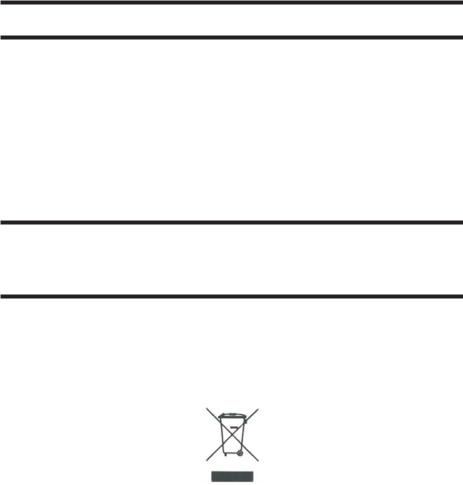
MAINTENANCE
REPLACING THE BATTERY
The LaMotte 1200 uses a standard 9-volt alkaline battery that is available worldwide. The battery compartment is located on the bottom of the case. To replace the battery:
1.Open the battery compartment lid.
2.Remove the battery and disconnect the battery from the polarized plug.
3.Carefully connect the new battery to the polarized plug and insert it into the compartment.
4.Close the battery compartment lid.
REPAIRS
If it is necessary to return the instrument for repair, telephone LaMotte Company at 1-800-344-3100 or fax 1-410-778-6394 for a return authorization number.
METER DISPOSAL
Waste Electrical and Electronic Equipment (WEEE)
Natural resources were used in the production of this equipment. This equipment may contain materials that are hazardous to health and the environment. To avoid harm to the environment and natural resources, the use of appropriate take-back systems is recommended. The crossed out wheeled bin symbol on the meter encourages you to use these systems when disposing of this equipment.
Take-back systems will allow the materials to be reused or recycled in a way that will not harm the environment. For more information on approved collection, reuse, and recycling systems contact your local or regional waste administration or recycling service.
25

WARRANTY
This Instrument is guaranteed to be free from defects in material and workmanship for a period of one (1) year from the original purchase date. In the event that a defect is found during the warranty time frame, LaMotte Company agrees that it will be repaired or replaced without charge except for the transportation costs. This guarantee does not cover batteries.
This product can not be returned without a return authorization number from LaMotte Company. For warranty support or a Return Authorization Number, contact LaMotte Company at 1-800-344-3100 or tech@lamotte.com.
Limitations
This guarantee is void under the following circumstances:
•Damage due to operator negligence, misuse, accident or improper application.
•Damage or alterations from attempted repairs by an unauthorized (non-LaMotte) service.
•Damage due to improper power source, AC adapter or battery.
•Damage caused by acts of God or natural disaster.
•Damage occurred while in transit with a shipping carrier.
LaMotte Company will service and repair out-of-warranty products at a nominal charge.
26
